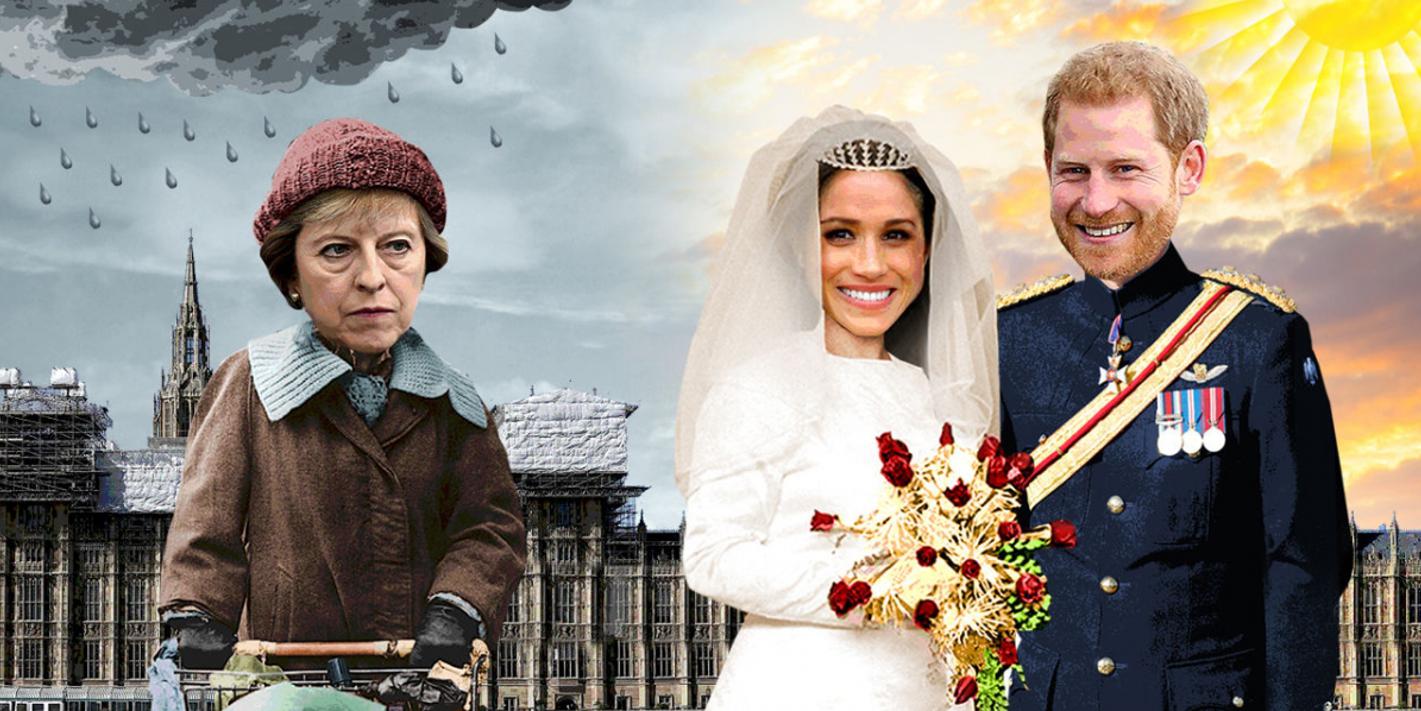The monarchy is at its strongest in years, unlike the government
The royal wedding is the latest fillip for the “dignified branch” of the constitution
A ROYAL wedding is as good a time as … any to conduct an audit of the British constitution. Walter Bagehot, the editor of The Economist in 1860-77, argued that the constitution was divided into two branches. The monarchy represents the “dignified” branch. Its job is to symbolise the state through pomp and ceremony. The government—Parliament, the cabinet and the civil service—represents the “efficient” branch. Its job is to run the country by passing laws and providing public services. The dignified branch governs through poetry, and the efficient branch through prose. Today, the dignified branch is adapting to an age of populism much better than the efficient branch.
Вернуться на Главную

Twenty-odd years ago it looked as if the monarchy was in an advanced state of decomposition. The ill-starred marriage of Prince Charles and Diana Spencer undermined the monarchy’s claim to unify the country through dignity. The couple’s squabbles divided supporters of Diana from a much smaller group of supporters of Charles, and provided the tabloid press with a rich (and sickening) diet of gossip. The queen capped it all with her handling of Diana’s death. She said nothing for five days, burning decades of goodwill with her silence.
The Charles and Di debacle was one of several. Prince Andrew and his ex-wife, Sarah Ferguson, were derided as “Airmiles Andy” and “Freebie Fergie”. The queen and Prince Philip looked out of place in “Cool Britannia”. Prince Charles’s determination to marry Camilla Parker Bowles, with whom he had conducted an affair while married to Diana, further alienated the public.
At the same time, the efficient branch went from strength to strength. Tony Blair and Gordon Brown modernised the Labour Party and went on to modernise the state, giving the Bank of England its freedom, devolving power to Scotland, Wales and Northern Ireland and spring-cleaning government departments. The efficient branch even had to step in to save the dignified branch from itself. Mr Blair pronounced Diana “the people’s princess” as the queen remained in her Scottish castle, and persuaded the palace to set up a committee to look at the Crown’s future.
Today the situation has been reversed. The efficient branch is in its worst state since the 1970s. The two main parties have been captured by their extremes. The prime minister lacks authority. Westminster has been rocked by scandals about sexual harassment and bullying. The Home Office is in turmoil. The government is preparing for Brexit, its most complicated task since the second world war, without a majority in the Commons or a consensus in its own ranks.
Brexit has confronted the efficient branch with an existential crisis. By calling the referendum, David Cameron not only betrayed the efficient branch’s guiding principle (that you keep the most difficult decisions for yourself) but also opened the door to a populist revolt. The efficient branch now has an agonising choice: implement a policy that it believes to be foolish, or frustrate the “will of the people”. Hence the paralysis—and the preoccupation with damage-limiting fudges.
The dignified branch, by contrast, is thriving. The queen represents stability in an unstable world, as well as unity in a polarised one. She has spent 66 of her 92 years on the throne and has survived 12 prime ministers and innumerable political crises. The royal household has done a good job of moving Prince Andrew and his ilk into the background and replacing them with a new generation. Prince William and Kate Middleton look exactly like the dignified mannequins that Bagehot’s constitution demands.
The marriage of Prince Harry and Meghan Markle is likely to be another brilliant chapter in this story of renewal. There are blemishes; Ms Markle’s family look almost as strange as the Windsors. But the happy couple nevertheless offer the dignified branch a chance to reinvent itself for a more multicultural and touchy-feely age. Ms Markle is a mixed-race American divorcee. As an actress, she has had the ideal training for her odd new career. Harry combines an easy charm with a sense of vulnerability, talking openly about undergoing therapy to recover from the horrors of his upbringing, particularly his mother’s death.
God save the queen
The dignified branch nevertheless has a problem waiting in the wings, in the form of the future Charles III. A new book by Tom Bower, “Rebel Prince”, paints an unflattering picture of the world’s oldest intern. Charles is both entitled and whiny. He lives in six houses but complains about his lot. He is astonishingly selfish, fretting about global warming while travelling by private jet.
The really worrying thing about Charles is not that he is a weak man but that he is a surprisingly strong one. He has a wacky but well-worked-out philosophy: New Ageism meets neo-feudalism. He has a record of getting what he wants. He forced a reluctant establishment to accept the “horsey home-wrecker”, Camilla, as his wife. He takes on what he regards as vested interests, berating architects for building carbuncles, opposing genetically modified crops and savaging modern educational theories. He has advanced his causes by writing to politicians and lobbying behind the scenes. This would be manageable if his beliefs were all barmy. The problem is that some of them, like his environmentalism, have proved both popular and prescient.
Being both determined and right is a …



































